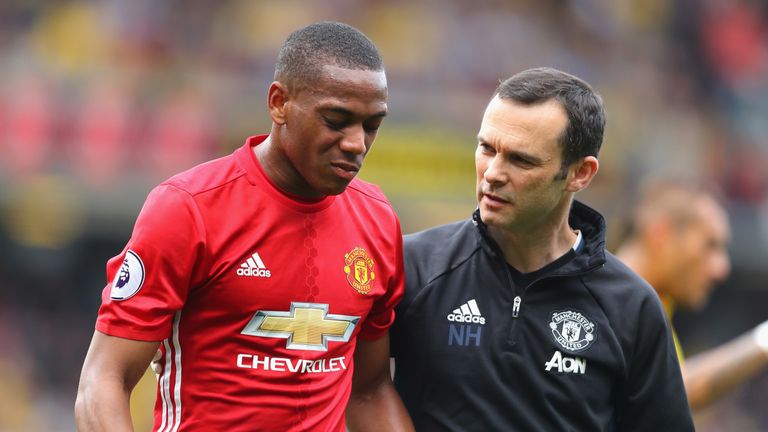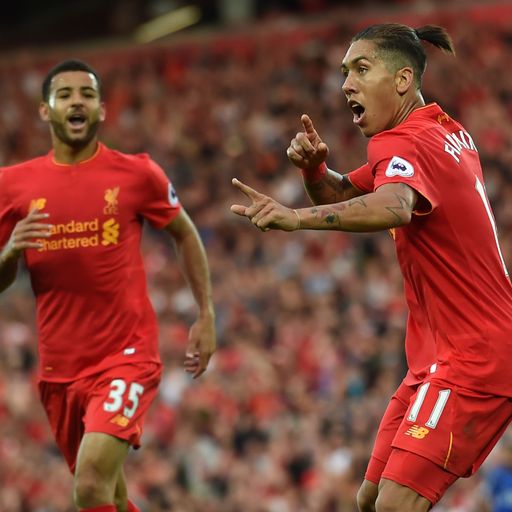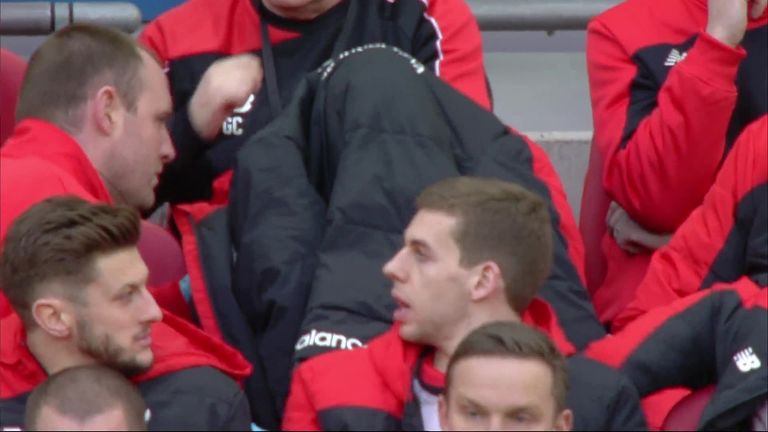Premier League head injury and concussion rules explained

Monday 19 September 2016 13:17, UK
Should Anthony Martial have been substituted by Manchester United before his error led to Watford's opening goal on Sunday?
The Frenchman clashed heads with Daryl Janmaat at Vicarage Road and required extensive treatment on the field. However, the forward played on and shortly afterwards lost possession in the build-up to Etienne Capoue's goal.
Martial was then substituted, holding his head as he left the field.
The incident has raised questions over whether the 20-year-old should have been removed from the field of play sooner, if club doctors suspected he had suffered concussion.
Here, we look at the rules around head injuries and how players suspected of having concussion should be treated - and when they can return to action…
What are the rules around players who suffer head injuries?
At the start of the 2014/15 season, the Premier League introduced new rules on how to deal with head injuries.
They stated that any player suffering a head injury must now leave the pitch and the club doctor must decide if the player is capable of continuing - not the team manager or coaches.
All Premier League players must also undergo a pre-season neurological assessment as part of their annual medical check-up to help doctors measure their recovery rate should they sustain a head injury during the season.
What happens when a player gets a head injury?
The medical team enter the field of play to assess the injured player. If there is a confirmed or suspected loss of consciousness, the player must be removed from the field of play and is not allowed to return.
If the player has not lost consciousness, an assessment will take place to determine whether the player has suffered concussion. This will include asking him questions such as, who has scored and what stadium they are at. If there is any suspicion the player has suffered concussion he will not be allowed to play on.
Medical staff can also watch video replays of the incident, if available, to be clear on the order of events.
If they have a head injury how long does it take for them to come back?
The FA and Premier League have set out clear 'return to play' guidelines for players who are suspected to have suffered concussion. Essentially, no player will be allowed to return for a competitive game for at least six days.
There is no blood test or scan which can diagnose concussion. Diagnosis is made on the basis of history and examination.
The guidelines work on a step-by-step basis, with a player only allowed to progress a step every 24 hours - although this process can often take longer. The steps are: No physical activity, light aerobic exercise, sport specific exercise, non-contact training drills, full contact training, return to play (after an all-clear from the club's medical officer).
When has this rule been applied?
Kasper Schmeichel was rested by Leicester on Saturday after sustaining concussion in training last week, while Mamadou Sakho was substituted during Liverpool's League Cup final with Manchester City last season after clashing heads with Emre Can.
Prior to the rules coming into force at the start of the 2014/15 season, there were also high-profile instances at the 2014 World Cup in Brazil, with Germany's Christoph Kramer subbed off during the first-half of the final.
What's the expert view on football's approach?
Luke Griggs from Headway Brain Injury Association has backed the rules put in place by the FA and Premier League but says there are concerns about the way they are applied.
"We have increasing concerns about the way in which protocols are being adopted across football when it comes to concussion," he told Sky Sports News HQ. "Over the past couple of seasons we've seen numerous high profile instances where a player has had a head injury, been assessed and continued, only to be removed from the field of play a short while later, showing more clear-cut signs of concussion. That can't be right.
"We are concerned that the safety first, 'if in doubt sit it out' approach isn't necessarily being adopted in all cases."
How dangerous is concussion?
"Concussion is a temporary disturbance of the brain's functioning," says Griggs. "If you continue to play after you've had a concussion and you suffer a secondary knock, that secondary knock can significantly exacerbate the damage to the brain and cause real problems.
"One of the issues we have with concussion is it tends to be an evolving injury, where the signs and symptoms may take some time to present themselves.
"You could be playing on without necessarily showing any of those signs, especially the more visible ones, such as loss of balance or vomiting or loss of consciousness. Only in around 10 per cent of concussions is there a loss of consciousness. Looking out for that one key indicator is not a sensible way to go.
"It's very important to protect someone while their brain is recovering from that initial, minor traumatic brain injury, to sit it out, rest and recover before going back into the field of play."







